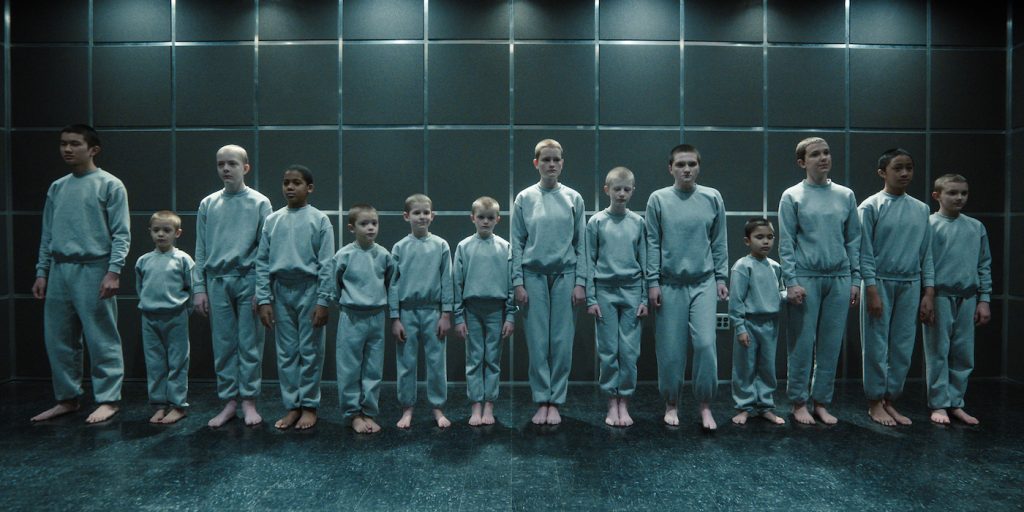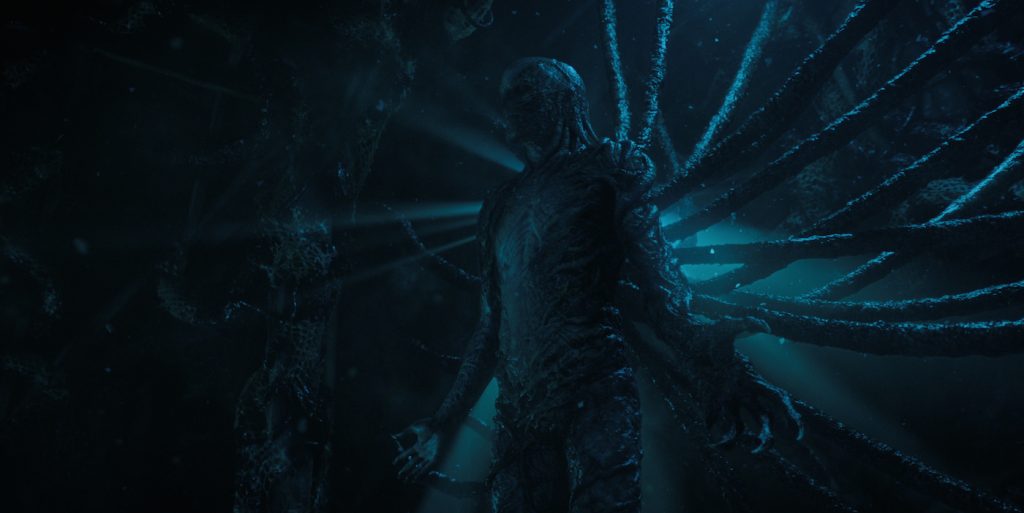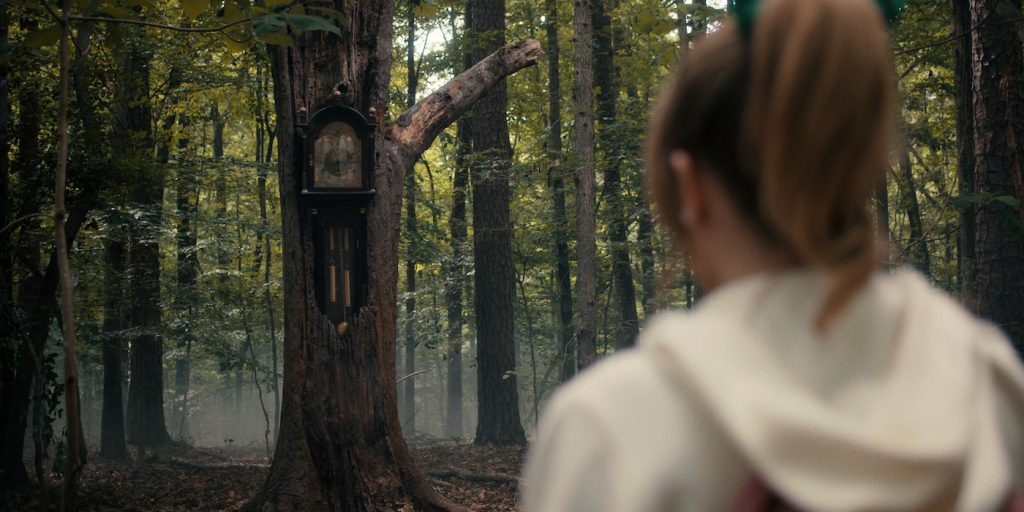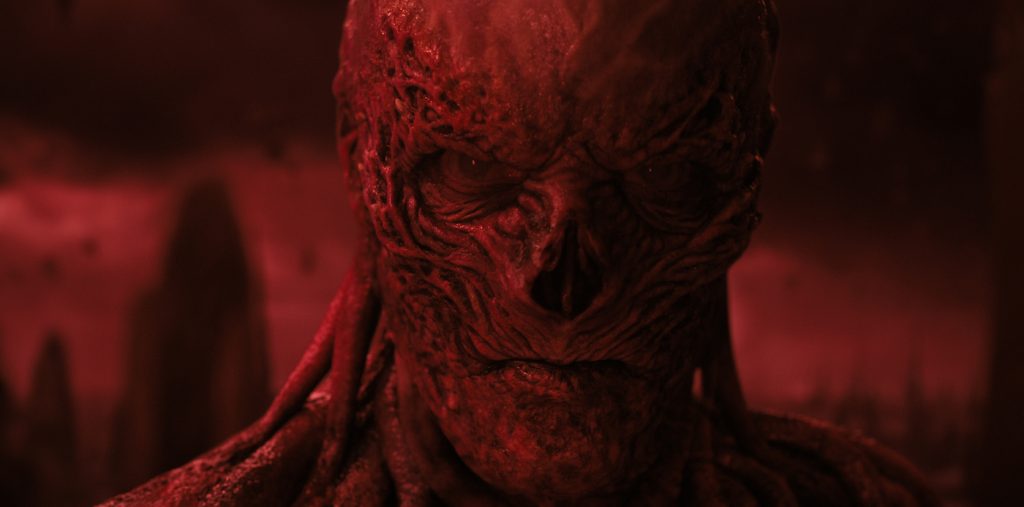Best of Summer: How the “Stranger Things” Sound Team Creeps You Out
As we’ve done for the past few summers, we’ve compiled a few of our favorite interviews to highlight in this last week of August. This is by no means a comprehensive list, but a little taste of some of the great conversations we’ve had during these hot summer months. Bring on sweater season.
When Millie Bobby Brown’s Eleven experiences a flashback a couple of hours into Stranger Things‘ fourth season, sound effects tell the mutant teenager’s nightmarish origins story in a nutshell: thunder, whooshing, whistles, choral voices, more thunder, pistol shots, birds screeching, rumbling, slithering sounds, squishes and thumps flood her head with 50 seconds worth of precision-orchestrated mayhem. In Matt and Ross Duffer’s supernatural thriller, sound effects, melded with Kyle Dixon and Michael Stein‘s throbbing synthesizer music, amplify the misadventures of terror-haunted teenagers from Hawkins, Indiana, including best friends Mike (Finn Wolfhard), Will (Noah Schnapp), Dustin (Gaten Matarazzo) and Lucas (Caleb McLaughlin).
Stranger Things’ Anywhere USA setting co-exists with The Upside Down, a hellish realm where sinister scientific research has unleashed monstrous predators. The man in charge of the show’s sonic bedlam is sound supervisor Craig Henighan. Oscar-nominated for Roma, he’s previously won three Emmy awards for overseeing Stranger Things audio and continues to lead a sound team that includes Angelo Palazzo, a former musician who now works as the series’ Emmy-winning lead sound effects editor. Henighan, inspired as a kid by Pink Floyd’s immersive record albums, says, “I was always the kid with the tape recorder, same with Angelo. Most of the world is visually oriented. We’re some of the people out there who are aurally oriented.”
Taking a break from Stranger Things’ July episodes, Henighan and Palazzo explain how they re-jigger cappuccino makers, squeaky closet doors, and industrial drills to construct the eerie soundscape of The Upside Down and beyond.
Taking Eleven’s flashback as an example, how do you go about designing Stranger Things’ sound-intensive sequences?
Craig Henighan: With Eleven this season, a lot of her flashbacks are from seasons one and two, so I’ll go back and take what we did before and tweak it to make it work within the sequence. While I’m doing that, Angelo is looking at season three, where we had a lot of mud, a lot of squishy blood — Matt and Ross refer to that as the gore season — so we have this library stacked with stuff that Angelo recorded over the years and well look there for hooks that have a strong sonic identity.

One of those hooks is the sickening sound made by the tentacle-like vines that wrap around this year’s monster, Vecna.
Craig: The vines squirming around Vecna are almost a direct descendent of the vines that crept around the Mind Flayer in the mall from season three and just got augmented a little bit. When the big tentacles thrust onto Vecna, you could have made that a regular sound of vines attaching or whatever, but this is Stranger Things — you need to make it larger than life. Angelo wound up putting explosion-y gunshots underneath those vine sounds.

Lots of layers?
Craig: Sometimes fifty sounds go into one thing! Then the trick becomes, how to make the effects clear and concise so it’s not just a giant roar with a big low end. It’s a lot of work to find frequencies for these peaks and valleys. And you can’t have sounds lingering for too long. The way human hearing works, the more you hear something the more you tune it out so you also need to create negative space. We try to get in and out, make the sounds staccato and punchy, match the cut with sounds we know are going to pop, and give the audience a certain flavor.
A new evil thing this season is the shrieking demobats. How did you make them sound so frightening?
Angelo Palazzo: One of the cool things we did is that Craig has a closet door that makes this high-pitched chittering sound when you open or close it. That inspired me because I also have this super squeaky wooden closet. I recorded my closet door, then tweaked it, so what you hear is this organic, high-pitched wood that chitters at a high frequency and sounds fluttery. That works great when you set it to these ferocious berserk piranha bats moving in a swarm.
Craig: Angelo and I always approach sounds from the non-literal side of things. Would you agree, Angelo?
Angelo: Yeah, our whole job is messing around with sound. It’s never “see a dog, hear a dog.” You might go: “What else makes a screaming sound? Oh, Craig’s cappuccino maker has this ungodly sound, so let’s record that!” Then it becomes part of the library.
The third episode of this season opens inside a small house that starts shaking to the sound of an enormous earthquake-like rumble. It turns out to be a nearby helicopter landing, but the sound is so deep it transforms what could have been a routine helicopter landing into something much more dramatic. How’d you guys create that earth-shattering rumble?
Craig: We have these microphones called geo-phones that are used for seismic work that you can bury in the ground. Our friend Jacob said some company was boring through a hydrofield in Burbank [California] with a giant drill, and he’s like, “I want to record this thing,” so he borrowed our geo-phones to get this ultra-sonic low stuff. The reality is that ultra-sonic and television are two worlds that don’t really meet but we were able to find frequencies in these recordings that work on a streaming platform. Then you throw in the rattles and the dishes and the light pouring through the windows.
Angelo: The whole idea was what would give it a Close Encounters feeling, where something’s going down, shaking the house, people inside are freaking out, but we don’t know it’s a helicopter until we cut to the outside. It’s a moment of tension where you don’t know what’s about to come around the corner, and it’s all sound design telling the story.
How do you know when a sequence is done?
Angelo: When I hand it over to Craig, I’m done. “Okay, your turn!”
Craig: Experience. If it’s 99 percent there, I might walk away and then come back to get that final one percent. Or sometimes you go back and decide, “It’s rad; I’m not going to touch it.”
Given the density of these sounds you’ve been describing, it must be tricky to organize all that audio?
Craig: We have probably around 400 odd tracks of sound effects. We have four buckets of regular effects, and within each bucket, there are sixteen tracks: eight mono and eight stereo. Then there are four sets of sound design, which is where all the vines stuff goes. And we have a pre-dub that’s called Entity, which is how they referred to the Demogorgon back in 2015 and being superstitious, I haven’t changed it. Then there are 24 tracks of Foley — footsteps and stuff. We’re constantly building our Stranger Things library, and there’s still a ton we haven’t even used yet. Like that closet sound, I had that idea like two seasons ago, but it just didn’t formulate until we realized the bats need to be a little squeakier, a little sharper sounding.
You frequently manipulate audio so it sounds like something else. Which tools do you use?
Angelo: I use Radium, a sampler that’s similar to the Synclavier keyboard from the nineties that allows you to perform and manipulate sounds almost like you would with a piano. Over the past few years, Radium’s re-ignited the fun level for me.
Craig: We both have microphones and recorders. Workstation-wise, we’re pretty much based in ProTools. And we’re always looking for new toys. This season I did a lot of feedback.

In Season Four, there’s a grandfather clock that plays a pretty big role, and it has a spooky personality all its own. What went into the “tick-tock” sound?
Craig: That’s a Westminster clock, but I added a cello thrum across every pendulum swing, We also used a gong and a chime the Duffer brothers sent me layered with a couple of chimes I had, and there’s a ripping sound undulating underneath it all.
Angelo: When Craig did the scraping cello thing, it really brought the “tick-tock” to life and gave it a creepy quality.
Craig: That was the goal. I made a really crazy version of the tick-tock clock, which I loved, but it’s one of the few times the guys said, “Ahh, can we just make the clock sound a little more normal?”
To be clear, there’s no human voice in the mix whispering “tick-tock”?
Craig: No. It just has a certain frequency that gives you this psychological feeling. That often happens in sound, where you think it’s something, but it’s not. The clock was one of two big things I had to deal with this season. What are we going to do with this clock? And the number one thing was Vecna.
Vecna, being this season’s slimy monster, needs to sound scary when he speaks. Did you model his speech around the actor’s voice?
Craig: I don’t have the plug-in chain in front of me, but the guys sent me dailies with Jamie Campbell Bower, the actor who plays Vecna and for whatever reason, Jamie’s voice and the plug-in chain I hit on worked really well.

If we could nerd out on the technology for a minute, how did you process Bower’s voice to make him sound like a monster?
Craig: I compressed the heck out of it. I added a lot of low-end EQ. Then it goes to my Infected Mushroom plug-in called Manipulator, and I used a pitch shifter or a pitch program from Waves. Then we added some reverb and delay. Our dialogue and music mixer editor, Mark Patterson, added his own special sauce and panned it left center right, so Vecna’s voice has more width when it needs to.
How did Vecna go over with Matt and Ross?
Craig: The brothers loved it. Vecna was one of those situations where we got it pretty quickly. Bang! I knew enough to back away and not overdo it, which I’ve been super guilty of doing. I go down these rabbit holes…
Angelo: Sometimes you throw all this stuff at an effect and then you wind up pulling things out because you realize it’s just two or three things that make the moment punch, and that’s all you need.
For more on Stranger Things, check out these stories:
“Stranger Things” Casting Director Carmen Cuba on Finding Season 4’s New Faces
“Stranger Things” Season 4 Smashes Netflix Record With 287 Million Hours Viewed
“Stranger Things” Season 4 Will Have Two Feature-Length Episodes
Featured image: STRANGER THINGS. Vecna Cr. Courtesy of Netflix © 2022



